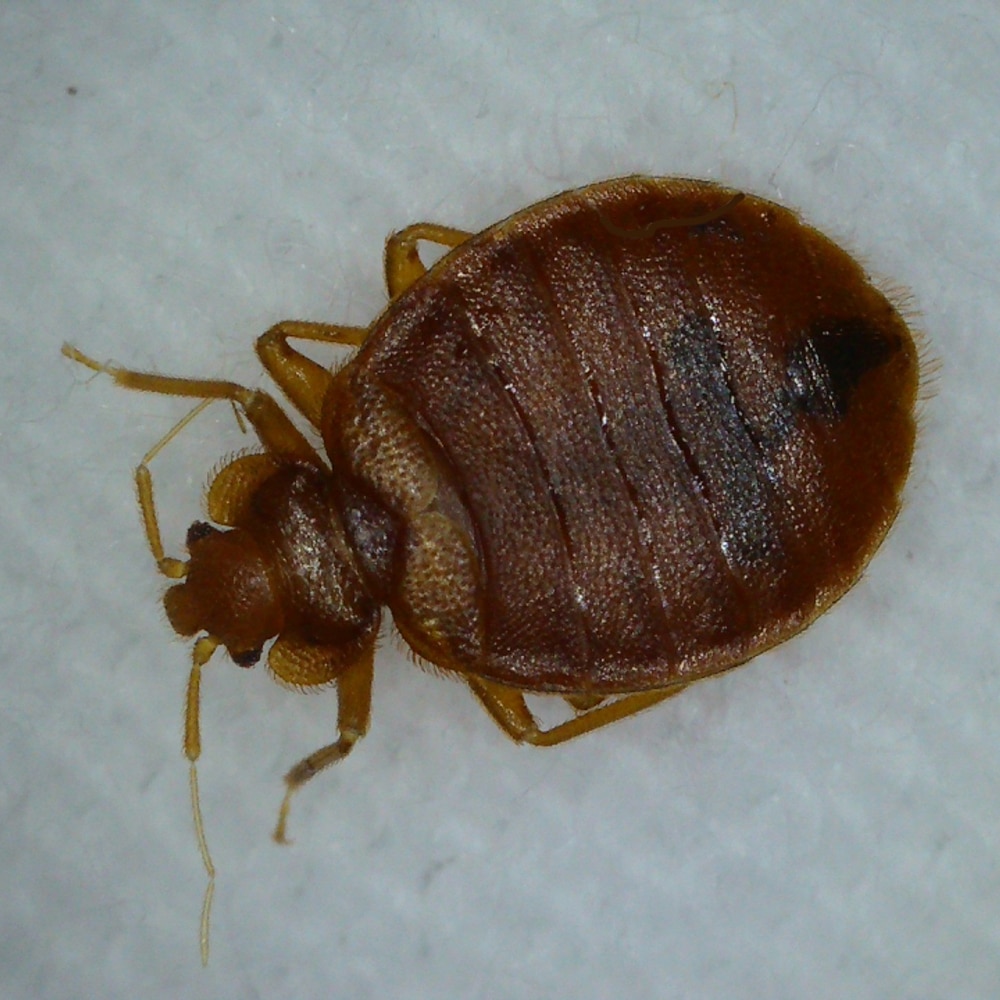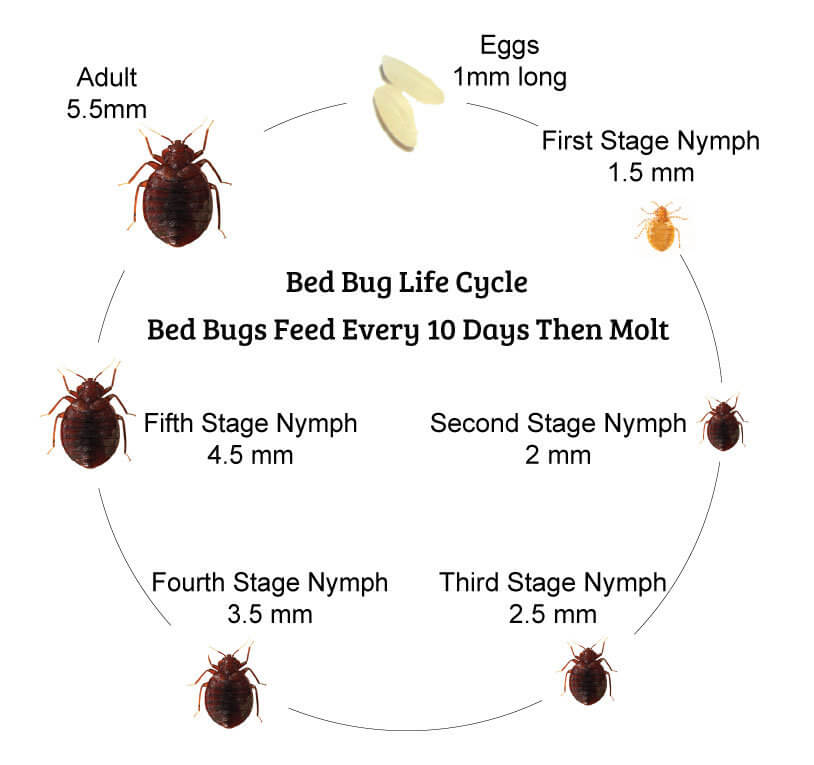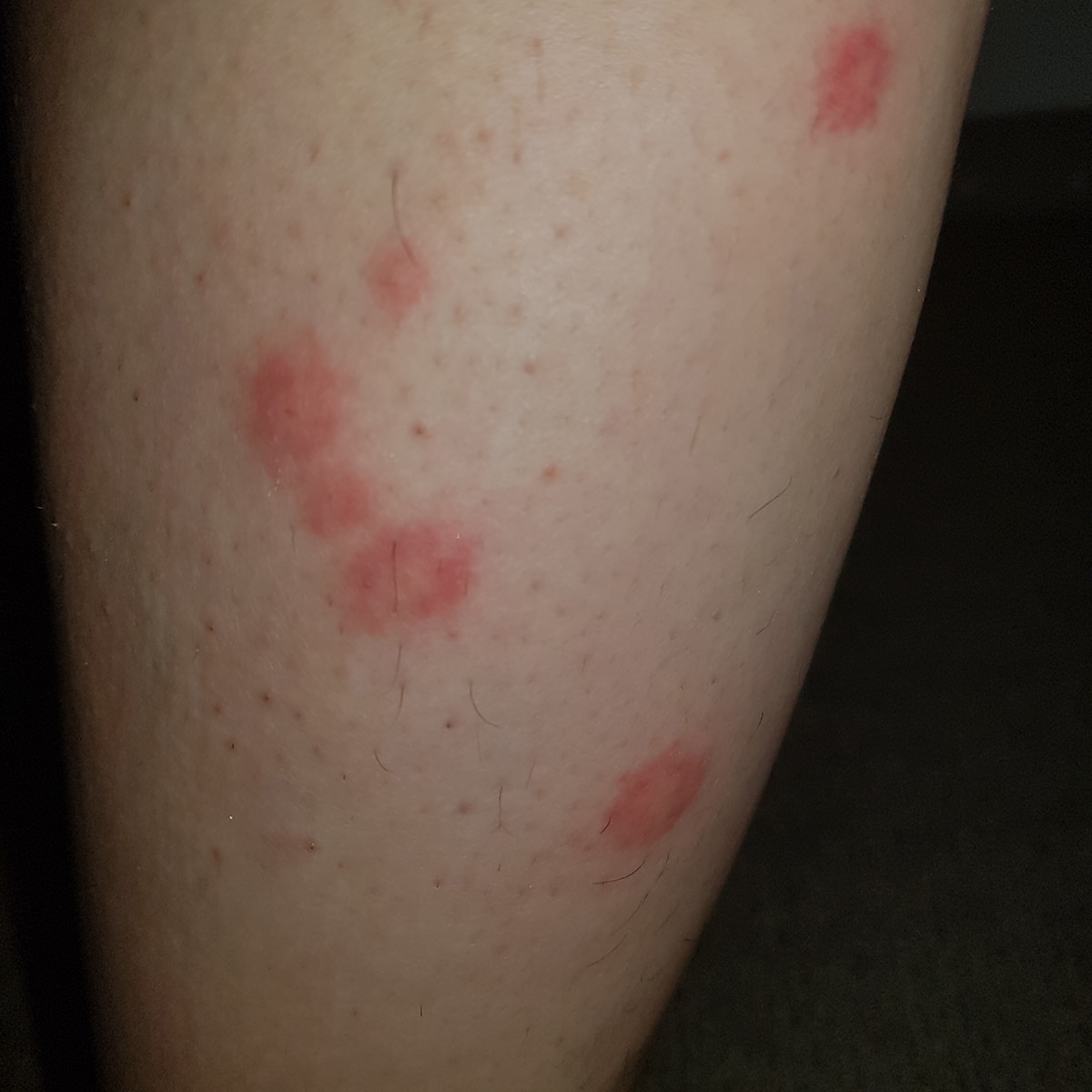
In the article
Last Updated on 16/02/2025 by Tony Abrahams
Bed bugs are a common and frustrating problem that can invade any home, hotel, or Airbnb. These tiny, blood-sucking pests hide in cracks, crevices, and even walls, making them difficult to spot and even harder to eliminate. In this comprehensive guide, you’ll learn everything you need to know, including how to identify them, treat infestations, and prevent them from coming back.
What Are Bed Bugs?
Bed bugs are small, oval-shaped insects that measure about 5-7mm in length. They are reddish-brown in colour and cannot fly or jump, but they are excellent crawlers and hitchhikers. They often enter homes through luggage, second-hand furniture, or clothing.

Adult Bed Bug
Quick Facts:
- They feed on blood, usually at night.
- They can survive up to one year without a meal.
- They hide in mattress seams, bed frames, carpets, and walls.
The Bed Bug Life Cycle: Understanding the Enemy
To effectively eliminate bed bugs, it’s important to understand their life cycle:
- Eggs: Tiny, white, and oval-shaped, bed bug eggs are about the size of a pinhead. They hatch in 6-10 days, and a single female can lay up to 500 eggs in her lifetime.
- Nymphs: These are smaller, lighter-coloured versions of adults. Nymphs must feed on blood to grow, moulting five times before reaching adulthood.
- Adults: Adult are about the size of an apple seed and can live for over 18 months. They reproduce quickly, making infestations difficult to control.

Bed Bug Life Cycle
Signs of a Bed Bug Infestation
If you suspect bed bugs are in your home, look for these common signs:
- Bites: Red, itchy bites in clusters, straight lines, or zigzag patterns, often on exposed skin like arms, legs, and neck.
- Blood Stains: Tiny blood spots on sheets or mattresses.
- Faecal Spots: Black or brown spots (bed bug droppings) on mattresses, sheets, or furniture.
- Exoskeletons: Shed skins left behind as they grow.
- Live Bugs: They are most active at night but can sometimes be spotted during the day.
- Musty Odour: A strong, sweet smell may indicate a severe infestation.
Bed Bug Bites: Symptoms and Treatment
Bed bug bites are typically red, itchy, and appear in lines or clusters. They are most common on exposed skin, such as arms, shoulders, and legs. While some people do not react to bites, others may experience allergic reactions, including swelling, redness, or severe itching.
How to Treat Bed Bug Bites:
- Self-Care: Wash bites with antiseptic soap and apply an ice pack to reduce swelling.
- Over-the-Counter Treatments: Use anti-itch creams like calamine lotion or hydrocortisone cream.
- Medical Treatment: If bites are severe or infected, consult a doctor. They may prescribe steroid creams, antihistamines, or antibiotics.

Bed Bug Bites On Leg
How to Get Rid of Bed Bugs
Eliminating these pests them can be challenging, but a combination of chemical and non-chemical treatments can help.
Why Pest Controllers Aren’t the Best Solution:
- Expensive: Professional pest control services can cost thousands of dollars.
- Toxic Chemicals: Pest controllers often use harsh poisons that can be harmful to your family and pets.
- No Guarantees: Many pest control treatments require multiple visits and still don’t guarantee complete eradication.
A Better Solution: Our DIY Eco-Friendly Treatment
Our DIY Isolation System is a safe, effective, and affordable alternative to traditional pest control. Here’s why it’s the best choice:
- Cheaper: At a fraction of the cost of a pest controller, our system saves you money.
- Easier: No need for multiple treatments or complicated preparations. Our system is simple to use and provides instant protection.
- Safer: Our eco-friendly solution uses no toxic chemicals, making it safe for your family and pets.
- Guaranteed: Unlike pest controllers, our system comes with a guarantee to eliminate these pests and prevent future infestations.
How It Works:
- Steam Treatment: Use a handheld steamer to kill these pests and their eggs on contact.
- Diatomaceous Earth: Apply this natural powder to bed frames and hiding spots to dehydrate and kill them.
- Mattress Covers: Seal your mattress with an encasements to trap and prevent new infestations.
- Barrier Traps: Set up traps under bed legs to isolate your bed and kill these pests as they try to reach you.
How to Prevent Bed Bugs
Preventing bed bugs is easier than dealing with an infestation. Follow these tips to keep your home bed bug-free:
- Inspect Second-Hand Furniture: Carefully check used furniture for signs before bringing it home.
- Travel Smart: Inspect hotel rooms and keep luggage off the floor. Wash clothes in hot water after traveling.
- Regular Cleaning: Vacuum frequently, especially around beds and furniture.
- Use Barrier Traps: Place traps under bed legs to catch them before they reach you.
Final Thoughts: Take Control of Your Bed Bug Problem
These blood sucking pests are a persistent pest, but with the right knowledge and tools, you can eliminate them and prevent future infestations. While pest controllers are expensive, use toxic chemicals, and often require multiple treatments with no guarantees, our DIY Isolation System offers a safer, easier, and more affordable solution.
Our eco-friendly treatment provides instant protection and comes with a guarantee to keep your home bed bug-free. Why spend hundreds on pest controllers when you can solve the problem yourself for a fraction of the cost?
Ready to Say Goodbye to Bed Bugs?
Shop our DIY Isolation System today and enjoy a bed bug-free home without the hassle, expense, or toxins of traditional pest control!



Rafael says
Can bed bugs live inside your body or under your skin like parasites?
Tony Abrahams says
Nope, thankfully they can’t! Bed bugs are creepy, but they’re not that creepy. Unlike lice or scabies mites that live on or under your skin, bed bugs are external parasites—they only feed on your blood, and only while you’re asleep. They don’t burrow under your skin or live inside your body. After feeding, they scurry back into tiny hiding spots like mattress seams, cracks in the bed frame, or behind skirting boards. So while their bites can be irritating and itchy, you won’t have to worry about them nesting in your skin. Still, their stealthy nature and nighttime feeding habits are enough to give anyone the shivers!
Cynthia says
Where can I get thw powder in chicago and a picture of it would help
Tony Abrahams says
Hi Cynthia.
We are an Australian company so we dont sell this powder in the USA. You can find Diatomaceous Earth on Amazon in the USA.
Regards Tony
David Canty says
I would like to buy these products. Can I pick them up in St Kilda? David
Tony Abrahams says
Hey David,
Thanks for your interest in our products! Unfortunately, we don’t offer a pick-up option. All orders are processed online and dispatched via Australia Post. If you place your order before 12 noon, Monday to Friday, it will be shipped out the same day, and you’ll receive a tracking number for your convenience.
Let us know if you have any other questions—we’re here to help! Regards BBB
Adam T says
Is the powder safe for my pets?
What is it made from?
Tony Abrahams says
Hi Adam. Yes, the powder is safe for pets. It’s made from Diatomaceous Earth (DE), a natural substance composed of fossilized remains of tiny aquatic organisms called diatoms. The DE powder we use is food-grade, meaning it’s safe for both humans and animals when used correctly. It works by absorbing the protective oils on insects’ exoskeletons, dehydrating and killing them. Regards BBB
Kristine says
Can you get bedbugs from going to the movies?
Tony Abrahams says
Yes, it’s possible to bring bedbugs home from a movie theater, though it’s rare. Bedbugs can hide in the fabric of theater seats, and they can hitchhike on people’s clothing, bags, or jackets. If someone brings bedbugs into the theater, they could transfer to another person’s belongings.
To reduce your risk, quickly inspect your seat before sitting. Look for any small, dark spots or tiny reddish-brown bugs. Keep your belongings off the floor, and check your clothes and bags when you get home if you’re concerned.
While it’s unlikely, staying cautious in high-traffic places can help you avoid bedbugs.
Vanessa Borg says
Why do supermarkets sell bedbug sprays that are ineffective?
Tony Abrahams says
Hi Vanessa. Supermarkets often sell bedbug sprays that are ineffective because they tend to prioritize stocking products that are widely available, affordable, and have mass appeal. Many of these sprays contain chemicals that may kill bedbugs on contact but don’t provide long-term solutions or penetrate deep enough to eliminate entire infestations. Also, bedbugs have developed resistance to some common pesticides, making these over-the-counter sprays less effective. Since supermarkets aren’t specialized in pest control, they may not carry the more advanced or eco-friendly options that are proven to work better.
Freya says
Is the powder safe for my pet cat, because she is trying to lick it? Thanks
Tony Abrahams says
Hi Freya,
Yes, the powder is safe for pets. It’s a food-grade, non-toxic powder, so it won’t cause any issues if your cat eats it. In fact, farmers feed this powder to their livestock to prevent intestinal parasites.
Regards,
Tony